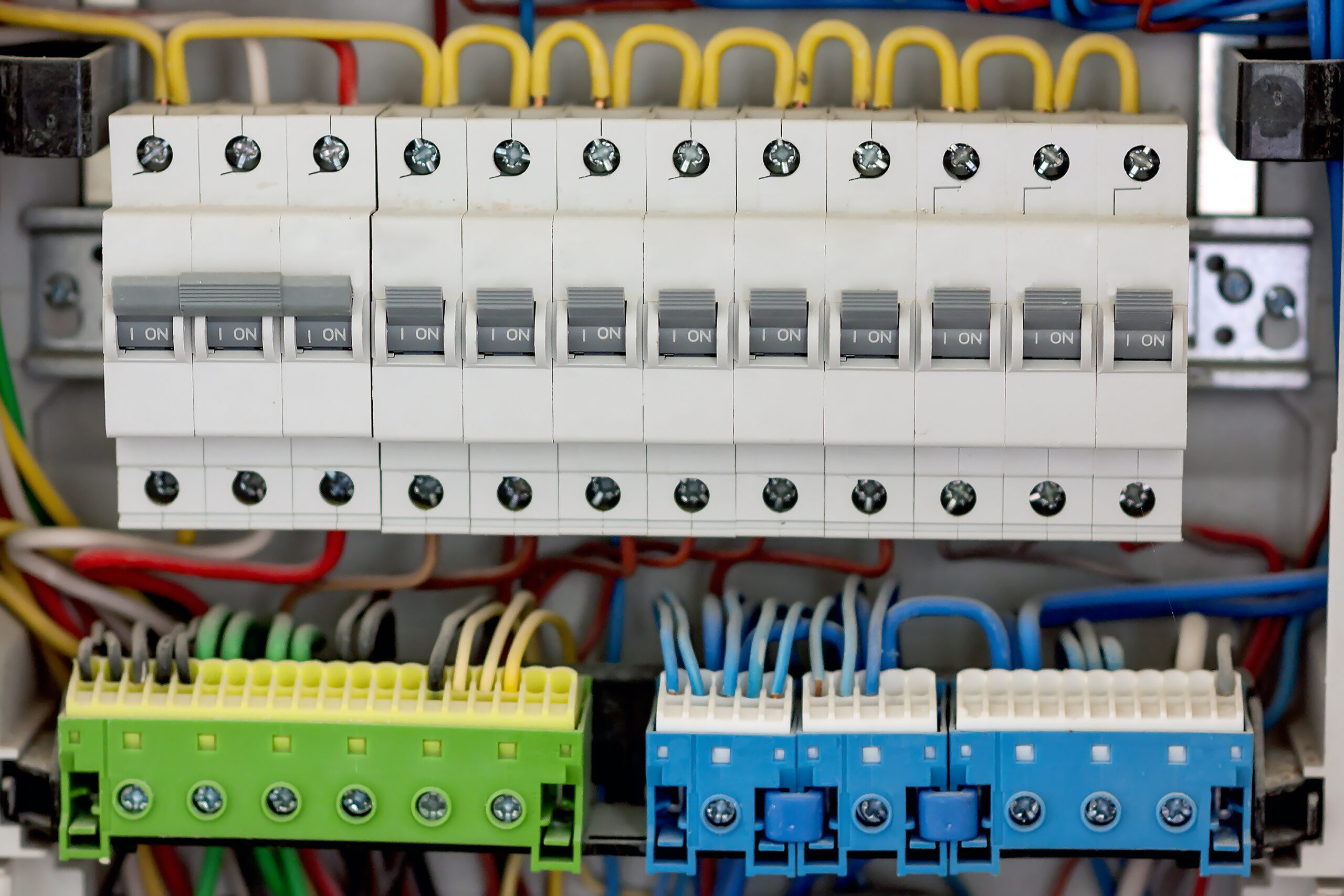Alternating Current (AC) is the predominant choice for powering many devices and equipment. The prevalence of AC in these settings is not merely a coincidence but a result of a fascinating journey through historical developments and technological advancements. From its humble beginnings to its current status as the standard, AC has cemented its place as the go-to option for powering our homes and businesses. Let’s explore the intriguing story behind the rise of AC in residential and commercial systems.
The development of electrical power systems marked a pivotal moment in history, with the emergence of two primary contenders: Alternating Current (AC) and Direct Current (DC). Understanding the origins of AC and DC is crucial to grasping the significance of the War of Currents, a defining chapter in the evolution of electrical power distribution.
In the early days of electrical power, Thomas Edison pioneered Direct Current (DC), which involved a continuous flow of electric charge in one direction. DC systems, such as lighting systems, were initially prevalent for localized power distribution in the late 19th century.
On the other hand, Alternating Current (AC) gained prominence thanks to the collaborative efforts of Nikola Tesla and George Westinghouse. AC systems utilize a rapidly changing flow of electric charge that can be easily transformed and transmitted over long distances, making them more efficient for widespread power distribution.
The War of Currents unfolded as a fierce rivalry between Thomas Edison, a staunch supporter of DC, and the Tesla-Westinghouse alliance advocating for AC. Edison waged a campaign discrediting AC, even resorting to public demonstrations of the dangers of high-voltage AC electricity.
Despite Edison’s efforts, AC emerged victorious in the War of Currents due to its ability to efficiently transmit power over long distances. The development of the first large-scale AC power system at the Niagara Falls power plant showcased the potential of AC in revolutionizing electrical power distribution.
Following the triumph of AC, its adoption in the power infrastructure revolutionized the transmission and distribution of electricity. AC systems became the standard for powering homes, industries, and cities, laying the foundation for modern electrical grids and shaping the technological landscape of the 20th century and beyond.
One of the critical advantages of AC is its ability to facilitate voltage transformation through transformers. AC voltage can be easily increased or decreased using transformers, enabling efficient electricity transmission over long distances. This capability is essential in adjusting voltage levels to match the requirements of various electrical devices and systems without significant energy loss.
AC exhibits superior efficiency in long-distance power transmission compared to Direct Current (DC). AC power can be transmitted over extended distances with reduced power loss, thanks to the ability to step up the voltage for transmission and step it down for distribution using transformers. This feature minimizes energy losses during transmission, making AC the preferred choice for transmitting electricity across vast networks.
In power generation, AC systems offer high efficiency in converting mechanical energy into electrical energy. Most power plants worldwide generate electricity in the form of AC due to its ease of transformation and distribution. AC power is well-suited for grid distribution as it allows for the seamless integration of renewable energy sources, centralized power generation, and efficient distribution to homes, businesses, and industries.
The technical advantages of AC, including voltage transformation capabilities, transmission efficiency, and power generation and distribution effectiveness, have solidified its position as the primary choice for modern electrical systems. These features have played a crucial role in shaping the development and operation of power grids worldwide.
AC power is the standard electrical supply for most household appliances and devices. Most appliances, such as refrigerators, air conditioners, televisions, and washing machines, are designed to operate efficiently with AC power. But it’s not the alternating current that makes it essential for our appliances. Its widespread use comes from the historical build-out of our electrical grid and its ability to be easily transformed to different voltages, making it ideal for efficient transmission over long distances. Even though our modern gadgets, like motors, heaters, and electronics, often convert AC to DC for better performance, the infrastructure and ease of voltage transformation keep AC at the forefront of home power systems.
The alternating nature of AC allows these devices to function effectively, powering motors, heating elements, and electronic components found in everyday household equipment.
AC systems have undergone standardization to ensure uniformity and safety in residential use. Electrical codes and regulations govern the installation and operating of AC systems in homes to mitigate the risk of electrical hazards. Standardized voltage levels, grounding requirements, and protective measures, such as circuit breakers and GFCI outlets, enhance the safety of AC power distribution within residential settings. These standards help protect occupants from electrical shocks, fires, and other potential dangers associated with electricity.
Residential AC systems rely on existing infrastructure, including power lines, substations, and distribution networks, to deliver electricity to homes. The infrastructure supporting AC power has been developed over decades, making it a reliable and widespread choice for residential applications. While maintaining AC systems incurs costs for upkeep, repairs, and upgrades, the investment in existing infrastructure often outweighs the expenses of switching to alternative power systems. The familiarity and efficiency of AC technology in residential settings contribute to its continued use despite maintenance costs.
Considering the compatibility of home appliances, safety standards, and infrastructure support, AC power remains a practical and cost-effective choice for residential electrical systems. These practical considerations underscore the importance of AC in meeting the energy needs of households while prioritizing safety, efficiency, and reliability.
Commercial apartments often have higher power demands than residential environments due to the operation of multiple electrical devices, machinery, and equipment. AC power is well-suited to meet these increased power requirements in commercial establishments. The ability of AC systems to deliver higher voltages and currents efficiently makes them essential for powering large-scale operations such as factories, offices, and retail spaces. The consistent and reliable supply of AC power supports the diverse power needs of commercial enterprises.
AC power offers scalability and flexibility to accommodate varying power loads in commercial settings. Businesses may experience fluctuations in power demand throughout the day or in response to operational changes. AC systems can adapt to these fluctuations by adjusting voltage levels and current flow to meet the dynamic power requirements of commercial operations. The scalability of AC technology allows businesses to expand their operations without significant changes to their electrical infrastructure, making it a versatile choice for commercial applications.
AC systems are often integrated with backup generators and UPS (Uninterruptible Power Supply) systems in commercial environments where uninterrupted power supply is critical. Backup generators can provide emergency power during grid outages or disruptions, ensuring continuous operation of essential equipment and services. UPS systems are a buffer between the main power supply and critical loads, offering seamless transition during power interruptions. Integrating AC power with backup systems enhances the reliability and resilience of commercial operations, safeguarding against potential downtime and losses.
By addressing power demands, scalability, flexibility, and integration with backup systems, AC technology remains a cornerstone of commercial electrical systems. Its capacity to meet high power demands, adapt to changing loads, and integrate with backup solutions underscores the importance of AC in sustaining the operations of businesses across various industries.
Integrating AC systems into smart grids represents a significant advancement in modern energy management. Smart grids leverage digital technology to monitor, control, and optimize the flow of electricity in real time, enhancing efficiency and reliability. AC power is crucial in smart grid infrastructure, enabling seamless communication between power generation sources, distribution networks, and end-users. Utilities can better manage energy demand, integrate renewable sources, and improve grid resilience by incorporating AC systems into smart grids.
Renewable energy sources like solar are increasingly integrated with AC systems to promote sustainability and reduce reliance on fossil fuels. Solar photovoltaic (PV) systems and wind turbines generate DC electricity, which is then converted into AC power for distribution through the grid. AC technology facilitates the efficient transmission of renewable energy over long distances, enabling the widespread adoption of clean energy sources. The synergy between renewable energy and AC systems contributes to a more environmentally friendly and diversified energy mix.
While AC power has been the dominant form of electricity distribution for decades, there is growing interest in potential future shifts towards DC in specific applications. Direct Current (DC) offers advantages in terms of energy efficiency, especially for specific electronic devices, data centres, and renewable energy systems. The rise of DC-powered technologies like electric vehicles and LED lighting has sparked discussions about the potential transition towards DC distribution in specific sectors. However, the widespread adoption of DC faces challenges related to infrastructure compatibility, cost, and existing AC-centric systems.
As we look towards the future, integrating AC systems into smart grids, the synergy with renewable energy sources, and the potential shifts towards DC in specific applications represent key trends shaping the evolution of electrical systems. These developments underscore the importance of innovation and adaptation in meeting the changing energy landscape.
AC power has maintained dominance due to its ability to efficiently transmit electricity over long distances, making it ideal for grid distribution. Additionally, AC allows for accessible voltage transformation using transformers, which is crucial for stepping up voltages for transmission and stepping down for consumption. The widespread availability of AC-compatible appliances and equipment further solidifies its position as the primary choice for electrical systems in homes and businesses.
Historically, the development of AC technology by pioneers like Nikola Tesla and the adoption of standardized AC voltage levels played a significant role in establishing AC as the standard for power distribution. From a technical standpoint, the ease of voltage transformation, the compatibility with existing infrastructure, and the cost-effectiveness of AC systems have all contributed to its widespread use. Practically, the abundance of AC-powered devices, from lighting to HVAC systems, has reinforced the preference for AC in both residential and commercial settings.
AC is expected to continue playing a vital role in electrical power systems, especially in grid distribution and mainstream applications. As innovations in smart grids, renewable energy integration, and energy management systems evolve, AC technology will adapt to meet the demands of a changing energy landscape. Potential developments may include:
- Enhanced grid resilience.
- Increased integration of renewable sources.
- Advancements in AC system efficiency and control.
The historical, technical, and practical advantages of AC power have solidified its position as the predominant choice for residential and commercial electrical systems. While the future may see advancements in energy technology and potential shifts towards DC in specific applications, AC is poised to remain a cornerstone of modern electrical infrastructure.




